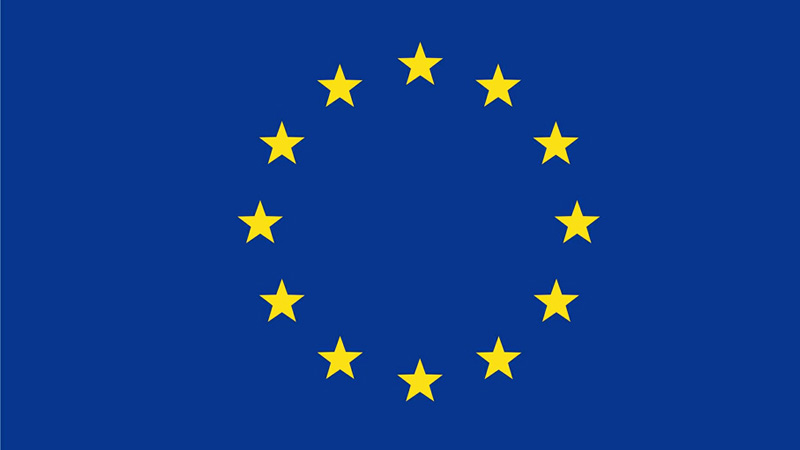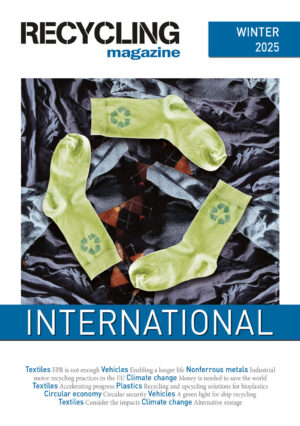EuRIC: Big decarbonisation promises, little support for circularity
EuRIC welcomes the Commission’s ambition to lay out a plan driving the continent’s energy transition and industry empowerment. However,´the Clean Industrial Deal (CID), falls short of delivering the bold measures needed to achieve these goals. It fails to effectively link decarbonisation with circularity or recognise the key role EU recyclers play in cutting carbon emissions and generating resources.
Europe’s green transition, strategic autonomy and industrial competitiveness depend on securing its own raw materials. Together with the Metals Action Plan and the Circular Economy Act, the CID has the potential to shape a future-proof industrial, climate, and energy strategy. Yet, its success depends on leveraging competitive decarbonisation measures that tackle Europe’s biggest problems; skyrocketing energy prices and the heavy dependence on primary resources.
The CID sets a 24% circular material use target by 2030, but lacks the concrete mechanisms to deliver it. Moreover, the CID focuses heavily on Critical Raw Materials (CRM), which represent only a fraction of Europe’s circular material flows, while failing to protect industries already grappling with low demand and rising costs.
Julia Ettinger, EuRIC’s Secretary General stated: “The Clean Industrial Deal must drive action, not just ambition. The EU now has all the tools it needs — from the Critical Raw Materials Act to the NZIA and the Clean Industrial Deal itself. The challenge now is to use them effectively. Recyclers urgently need support as they battle skyrocketing energy prices, weak demand and excessive red tape. There can be no decarbonisation and competitiveness without circularity, and no sustainable future without a strong recycling industry.”
Zero Waste Europe calls for stronger circularity measures
The Clean Industrial Deal (CID) falls short of fully leveraging the potential of the circular economy for the much-needed economic transition, says environmental network Zero Waste Europe.
One of the ambitions of the CID is to make the EU a world leader in the circular economy by 2030. The CID states the Commission will adopt a Circular Economy Act (CEA) in 2026. This Act is supposed to facilitate the transition from waste management, boost demand for secondary raw materials, and protect valuable materials.
Aline Maigret, Head of Policy at Zero Waste Europe, states: “The Clean Industrial Deal sets a high-level framework that does not go far enough in unlocking the potential of the circular economy. Circularity measures, and the Deal in particular, should serve as a guiding compass for transforming how we consume and produce, empowering communities, and building resilient economies through job creation in circular sectors. The impact of the CID will hinge on the details that emerge next.”
In addition, with significant public funding foreseen, transparency and inclusivity will be key. In that regard, “the Clean Industrial Dialogue on circularity is a welcome step,” Maigret adds, “provided civil society has a seat at the table and such a dialogue is expanded to all CID topics.”
The CID rightly recognises the need to reduce Europe’s dependence on unreliable supply chains by boosting material recovery and reuse. However, the environmental network notes that without a framework for how materials will be used strategically and addressing the EU’s unsustainable material footprint, the CID misses the mark.
One financial incentive in the EU toolbox is Extended Producer Responsibility (EPR), which the Commission proposes to revise and harmonise. One of the network’s concerns is that this harmonisation might lower standards and weaken environmental protection. While the CEA’s approach to EPR is a step in the right direction, as digitalisation and simplification can strengthen compliance and transparency, the new rules must avoid a race to the bottom.
Moreover, the CID’s commitment to streamlining end-of-waste criteria must safeguard human health and the environment. True circularity requires cleaner production and material design from the start, alongside better disposal solutions. For example, the CID fails to address the negative impacts of waste incineration and focuses solely on diverting waste from landfills, thereby neglecting a holistic approach that also includes measures to divert waste from incinerators.
Clean Industrial Deal risks overlooking criticality of plastics manufacturing to Europe’s industrial base
Plastics Europe strongly supports the EU’s competitiveness and decarbonisation agenda and welcomes the Clean Industrial Deal. It outlines very important and much-needed measures, including initiatives to lower energy costs, reduce red tape, and create the market demand necessary to incentivise circularity investments.
However, our members remain deeply concerned that the essential contribution of the European plastics sector to Europe’s industrial base continues to be overlooked. Moreover, the Clean Industrial Deal lacks the urgency needed to restore the competitiveness of EU plastics manufacturing and get its transition toward net-zero and circularity back on track.
Virginia Janssens, Managing Director of Plastics Europe, said: “The EU is demonstrating the ambitious political leadership necessary to restore its competitiveness, but policymakers cannot afford to continually overlook the essential contribution plastics make to the EU economy, providing essential inputs to strategic EU sectors like automotive, net-zero technologies, healthcare, construction and defence, or the role they are playing in the transition of these industries.”
“European plastics manufacturing is vital to the future of the EU’s industrial base and broader strategic autonomy. Without urgent action, Europe will become increasingly dependent on imports of plastic resins and finished goods from regions with often less stringent environmental standards.”
The complexity of the European plastics system and long investment cycles mean that investment decisions taken in the next two years will determine whether and how quickly we can fulfil the ambitions set out in the EU’s Green Deal and our Plastics Transition roadmap. The window of opportunity to address the competitive challenges facing our industry and create a more favourable investment climate is rapidly closing.
Waste-to-Energy crucial to Clean Industrial Deal
ESWET welcomes the Clean Industrial Deal and urges policymakers to fully recognise Waste-to-Energy (WtE) as a key contributor to a clean, circular, and energy-secure Europe.
WtE plays a crucial role in producing affordable, reliable energy, a core pillar of the Clean Industrial Deal. By converting non-recyclable waste into stable, locally produced energy, WtE reduces dependence on fossil fuels and supports industrial electrification and district heating. This aligns with the EU Commission’s Action Plan for Affordable Energy, which seeks to lower energy costs and break free from fossil fuel volatility.
WtE also advances the Clean Industrial Deal’s goal to strengthen Europe’s leadership in the circular economy by increasing secondary raw material use and reducing landfill reliance. WtE achieves this by treating residual, non-recyclable waste, and by recovering materials (metals, and minerals) as well as valuable energy (electricity, heat, steam, renewable and low-carbon fuels). In doing so, WtE diverts this non-recyclable waste from landfills, in line with the waste hierarchy and the upcoming Circular Economy Act.
In addition, WtE promotes the Clean Industrial Deal’s goal of enhancing decarbonisation, thanks to the integration of Carbon Capture, Utilisation, and Storage (CCUS) technologies in WtE plants. By capturing fossil and biogenic CO₂ emissions with CCUS, the WtE sector further accelerates emissions reduction and removal, supporting the upcoming Industrial Decarbonisation Accelerator Act. This effort aligns with the Clean Industrial Deal, which emphasises the importance of clean-tech manufacturing in Europe. ESWET members already provide state-of-the-art solutions that boost Europe’s industrial competitiveness while fostering decarbonisation.
Some opportunities with few guarantees
The Clean Industrial Deal presents a vision that could help to decarbonise Europe’s industry, but there are still too many unknowns, environmental group ECOS warns. For the EU to stay competitive in the long-term, and be a clean industrial leader, the wellbeing of people and planet must be woven into every aspect of how this strategy is implemented, ECOS says. Otherwise it will not deliver what has been promised.
In its Clean Industrial Deal, the EU has taken some steps towards advancing the European Green Deal. For example, the 2040 emissions reduction target of 90%, the focus on reducing energy costs, and the willingness to apply circular economy principles more widely.
However, with many possible options still on the table for many different industries, the ultimate direction of travel is not yet clear, warns environmental group ECOS. Many doors have been left open to implementation — good and bad.
The publication is a mixed bag, says ECOS, with encouraging signals in some areas, and questions raised in others.
Lead markets: Public procurement can stimulate the development of lead markets if it is strategically designed to do so. Prioritising non-price criteria (such as environmental performance and resilience) in public tenders drives demand for key industrial goods (such as green cement and steel) and is an important step. However, few insights are provided into how the EU intends to connect the dots between the different pieces of relevant legislation. We need a clear plan.
Cement: Cement is a key industry for Europe, with high CO2 emissions, and European innovators have long called to raise the bar. It is also energy intensive and in need of an updated and sector-wide shift to quickly decarbonise. However, unlike steel or automotives, it receives little attention in the Clean Industrial Deal. This is worrying because key EU policies such as the EU Emissions Trading System (ETS) and Construction Products Regulation (CPR) urgently need to adjust to the many low-carbon cement and concrete innovations on the market.
Circular economy: The ambition of the Clean Industrial Deal is to make the EU the world leader on circular economy by 2030. This is encouraging, but sustainable resource management, sufficiency, and demand reduction are missing. We cannot recycle our way out of the triple planetary crisis — we must also reduce the resources we use. Ecodesign has a lot of potential as one of Europe’s most successful tools to support and mainstream innovations and energy savings. However, the lack of attention given to the effects of toxic pollution on human health and the environment, as well as to clean material streams in the circular economy, is concerning.
Bioeconomy: Attention given to bioeconomy is encouraging, because in the context of planetary boundaries, biomass is scarce. The focus should be on reducing the impacts of the bioeconomy, restoring nature, operationalising the cascading use principle, supporting sectors that are truly aligned with ambitious ecological principles, and avoiding regrettable substitution effects.
European container glass industry calls for recogniton in the Clean Industrial Deal
Feve states that the proposals are a step in the right direction to provide the enabling conditions for our industry’s competitiveness, such as lower energy prices, increased supply of renewable and low carbon energy, and better access to grids. But we regret that some sectors (automotive, steel and metals, chemicals) receive particular attention. Many of the measures proposed under the CID rely on additional funding, so the focus on these sectors should not result in insufficient resources being allocated to other critical industries.
This matters because the container glass industry is a crucial pillar of Europe’s economy, supporting high-value sectors such as food, beverages, pharmaceuticals, perfumes, and cosmetics.
The container glass industry is already taking action to address decarbonisation through multiple paths, but requires policy certainty, investment, and energy access to complete its transition to climate neutrality. The proposal for an Industrial Decarbonisation Facility is promising to ensure adequate funding is available at EU level to provide the necessary support to decarbonise our industry, both in terms of capital and operational expenditures. However, we are concerned that support for operational expenditures is absent from the draft proposals for the State aid reform, as the high cost of electricity remains one of the main barriers for investing in electrification.











